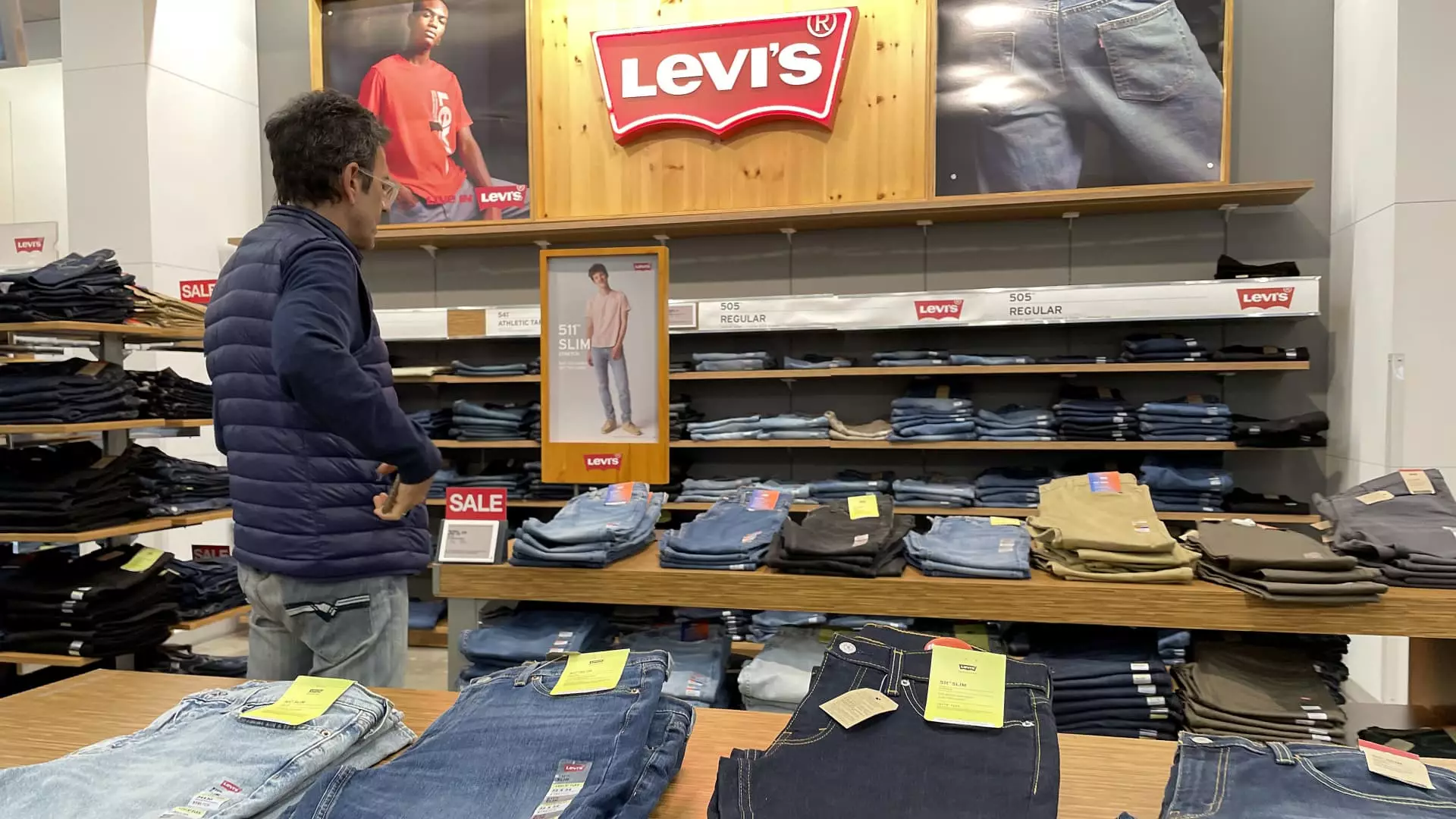The world of fashion is perpetually evolving, with consumer preferences shifting as rapidly as trends are born. Levi Strauss & Co, renowned for its iconic denim products, finds itself at a precarious crossroads—while its flagship Levi’s brand flourishes, the enduring Dockers brand is proving to be a significant drag on the company’s overall performance. With a recent announcement to potentially divest Dockers, Levi’s seeks to realign its focus on profitability and consumer engagement.
Levi’s Brand Resilience amidst Total Revenue Stagnation
During the fiscal third quarter, Levi’s brand showcased commendable growth, marking a 5% increase—a notable feat given it is the largest gain the brand has seen in two years. However, this positive trend stood in stark contrast to the company’s overall revenue figures, which stagnated at $1.52 billion, slightly undercut by analysts’ expectations of $1.55 billion. This juxtaposition highlights a critical insight: while Levi’s denim products resonate with consumers, the company struggles under the brand’s umbrella due to factors beyond its flagship line.
Adjusted earnings per share of 33 cents exceeded expectations, but despite this success, the market responded coldly, with shares plunging over 8% in after-hours trading. It becomes apparent that investor sentiment remains cautious, casting a shadow over Levi’s promising core.
The mixed bag of financial results prompted Levi’s to revise its full-year revenue forecast. Originally predicting a growth range of 1% to 3%, the company now anticipates just a 1% increase. This retraction spirals downwards against an anticipated growth estimate of 2.3%, signaling potential underlying issues that analysts are keenly observing.
Despite this, Levi’s maintains a steady commitment to its $1.17 to $1.27 adjusted EPS guidance, reflecting resilience in its performance expectations. The figures released for the quarter ending August 25 depict a net income rise to $20.7 million—up from the previous year’s $9.6 million. This increase suggests that while the challenges are present, Levi’s operational strategies have potential efficacy that could foster improvement over time.
While Levi’s garners attention for its successes, the ongoing struggles of Dockers cannot be ignored. Once a staple in American fashion, Dockers has witnessed a 15% decline in sales, plummeting to $73.7 million. This trend reveals a brand that has lost its foothold in the modern consumer’s wardrobe. The khaki pants that once dominated closets now languish in obscurity, highlighting a significant shift in fashion priorities.
Levi’s executives acknowledge the overlap between the two brands, attributing Dockers’ challenges partly to dilution of its unique identity. As Levi’s expands into a broader lifestyle offering, the need for differentiation has become increasingly pronounced. Harmit Singh, the finance chief, reflected on this struggle, implying that the company’s withdrawal from Dockers is not merely a strategic shift, but a necessary move to allow each brand to thrive autonomously.
Direct-to-Consumer Strategy: A Path to Increased Profitability
Crucial to Levi’s future is its strategy to enhance direct-to-consumer sales—an avenue that has proven profitable, with a reported 10% rise in direct sales and a significant 16% growth in e-commerce during the quarter. This transformative approach allows Levi’s to build a closer relationship with consumers while bypassing traditional retail channels—often squeezing margins—placing the company in a better position to understand and respond to market dynamics.
Notably, direct sales accounted for 44% of total revenue, with aspirations to elevate that figure to 55%. This pivot toward direct engagement emphasizes the need for brands to harness consumer data and insights, allowing for tailored marketing efforts and product personalization.
Amplifying its cultural relevance, Levi’s has recently partnered with Beyoncé, linking its products with the global superstar’s brand. This collaboration aligns closely with Levi’s strategic vision of interweaving cultural icons and lifestyle branding. As highlighted by CEO Michelle Gass, the partnership exemplifies the melding of music and fashion, both central to the modern consumer’s experience. These collaborations can revitalize the Levi’s narrative and broaden its appeal beyond traditional denim enthusiasts.
Future Outlook: Navigating the Landscape
With the upcoming quarter crucial for recalibrating its expectations, Levi’s faces an intricate tapestry of market forces. The combined effects of a flagging Dockers brand, evolving consumer preferences, and a strategic pivot towards direct engagement represent both challenges and opportunities. As Levi Strauss & Co continues to innovate and adapt, it is essential that the company steers its legacy toward a more profitable and engaging future. Balancing the scales between historical triumphs and contemporary demands will be where Levi’s true resilience lies.

